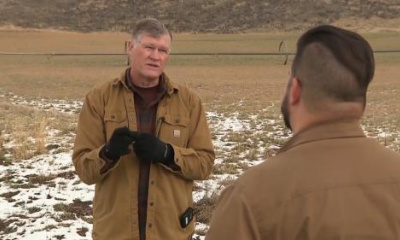SALT LAKE CITY — A "strike team" convened to help give Utah's political leaders advice on how best to help the Great Salt Lake is urging increased conservation and dedicated water to the lake.
"Declining water levels of Great Salt Lake threaten economic activity, local public health, and ecosystems. The situation requires urgent action. Fortunately, science provides crucial perspective, understanding, and scenarios for policymakers to chart a path forward. Many policy levers can help return the lake to healthy levels," the report said.
The Great Salt Lake Strike Team is made up of researchers from the University of Utah and Utah State University and state agencies. They provide input on the health of the lake and make recommendations to the governor and members of the Utah State Legislature.
"Human and natural consumptive water use explain over two-thirds of low lake levels. Other smaller contributing factors include natural precipitation variability and climate warming. Human water use is not only the largest contributing factor for Great Salt Lake’s decline, but also the only factor that can be changed in the near term," the report said.
The Great Salt Lake is at its lowest level in recorded history, as a result of water diversion, drought and a changing climate. The lake's decline has presented an ecological and economic crisis for northern Utah. The shrinking lake impacts Utah's snowpack, toxic dust storms impact population centers. The lake is a refuge for millions of migratory birds and other wildlife, as well as over $1 billion in economic impact to the state.
The Utah State Legislature has responded by committing millions of dollars and passing bills for water conservation efforts and getting water into the lake. House Speaker Brad Wilson, R-Kaysville, told FOX 13 News previously he wanted to see $600 million spent this year on water and the lake. Governor Spencer Cox told FOX 13 News he would not let the Great Salt Lake dry up on his watch.
The strike team recommends lawmakers set a target goal for the Great Salt Lake's level from 4,198-4,205-feet. It's something lawmakers rejected in a resolution put forward by Sen. Nate Blouin, D-Salt Lake City. Lawmakers have faced criticism for some bills aimed at protecting the lake not passing this legislative session.
Their report called for policy makers to commit conserved water to the Great Salt Lake itself, especially in wet years like we are experiencing now.
"Committing conserved water to the lake is a fundamental policy lever that is crucial for many other policies to function effectively," it said.
It also supported new tech to help farmers save water and still grow crops, expanding cloud-seeding, consider increasing water rates to push conservation, limiting municipal and industrial water use growth, and take advantage of leasing water rights for the lake itself.
"Thinning Utah’s forests is not likely to substantially increase the amount of water reaching the GSL . Although thinning can improve forest health and reduce the risk of severe wildfire, it does not always increase streamflow," the report said, pushing back on an idea being advanced in some circles.
The report also said a pipeline to the Great Salt Lake is "feasible," but slow and expensive.
"Based on similar completed projects, the total cost could exceed $100 billion for the studies, design, and construction of a pipeline, depending on the route chosen," it said.
The strike team supported something Governor Spencer Cox has already done — raising the causeway berm.
"Raising the adaptive management berm at the Union Pacific Railroad causeway breach between the North and South Arms of Great Salt Lake would effectively act as a dam. This would keep freshwater inflows of the major tributaries in the South Arm where salinity levels are reaching a critical threshold," it said.
The report said toxic dust storms have been increasing in frequency and severity as the lake has dried up.
"These dust episodes pose an immediate health risk to all residents along the Wasatch Front due to inhalation of particulate matter (i.e., PM10) and high concentrations of arsenic, which could increase the risk of certain cancers. Dust hotspots exist in all four quadrants of the lake and represent about 9% of the exposed lakebed. Over time, the fraction of the lakebed capable of producing dust will increase as the protective surface crust that formed as the lake receded gradually erodes," it said.
Updates on this breaking news story on fox13now.com and FOX 13 News as information becomes available.








